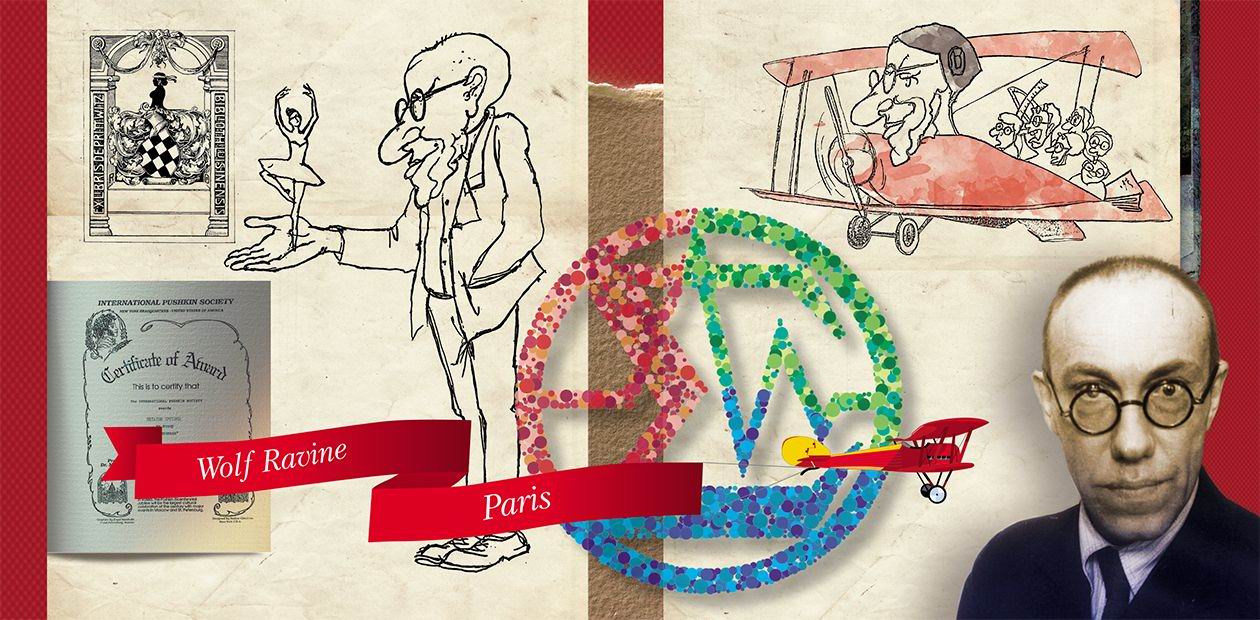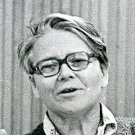The capitals have been abandoned …
Today, it is scarcely imaginable that a native of Moscow quits a well-paid job and comfy apartment and moves to Siberia, which is a four-hour flight from the capital. And not to today’s Siberia with its cities having populations exceeding one million and developed infrastructure of entertainments but to the Siberia where one goes not on one’s own free will but is deported under guard. In the 1960s, the voluntary move of Academician M. A. Lavrentiev and his adherents, young researchers and their families, from Moscow to Siberia to most people seemed unthinkable. Nonetheless, the idea of going to Siberia to make Big Science allured quite a few. That way, a grandiose project and just as grandiose construction started in the USSR, which turned the Akademgorodok of Novosibirsk into a phenomenon of the 20th century.
One of its aborigines became Natalia Alekseevna Pritvits, a post-graduate of the Hydraulics Department with the Kuibyshev Construction-Engineering Institute, Moscow. As everybody else, she went there to conquer Siberia and do science. She began working in the first of Akademgorodok’s research institutes, the Institute of Hydrodynamics. However, the destiny had other plans for her: several years later, at the suggestion of M. A. Lavrentiev, Natalia Pritvits became the Academic Secretary of the Siberian Branch of the USSR Academy of Sciences responsible for media relations and later, a chronicler of Akademgorodok
...The capitals have been abandoned –
Having fled the banks of the Neva
And the Academies of Moscow,
The cream of society now lives in a valley,
The celebrated valley
Benamed Golden.
“The Doliniad” by N. A. Pritvits*
From Wolf Ravine to Golden Valley
The Wolf Ravine was a nook on the skirts of a pine forest near the Zyrianka River. The pathfinders planted themselves here: Academician Mikhail Alekseevich Lavrentiev and his wife Vera Yevguenievna lodged in a woodman’s log cabin; his disciples, son with his wife and all young researchers settled down in wooden bunkhouses nearby.
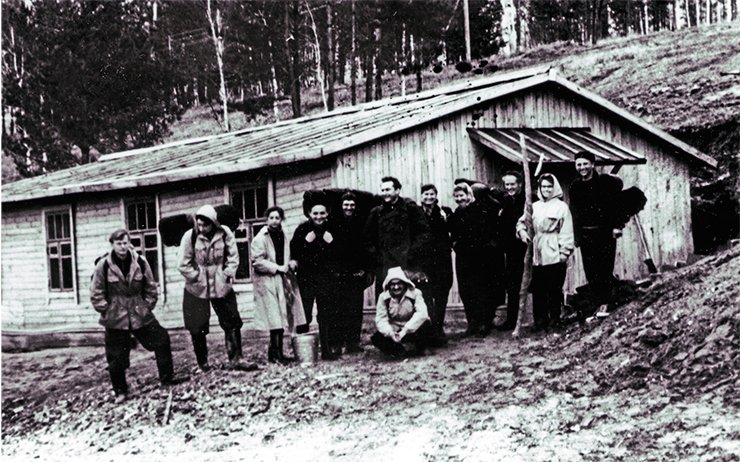
Thirty aborigines and their twelve children welcomed the new, 1959, year in snow-covered Siberia busy with routine chores like felling, cutting and chopping dry trees to burn them in stoves: the thin walls of the houses did not keep warmth and got completely frozen by the morning. Another concern was snow clearance: the snow would sometimes smother the house doors. The adults were never idle, and the children went to a play school set up by the residents of the Wolf Ravine. In the summer of 1959, another couple dozen new settlers arrived, and the Wolf Ravine was renamed as the Golden Valley.
We were lucky to be young during the era of enthusiasm. That was the time of initiative. My dream was to go to Siberia after graduation; I wanted to participate in the construction of hydro power stations. Unexpectedly, the Soviet government prescribed the development of thermal power, so all my plans of conquering Siberia fell through and I went to graduate school. As soon as my studies began, the construction of hydro power stations renewed. I remember I was so upset that there I was, stuck up in graduate school while my friends were working in Siberia, but how could I leave school?
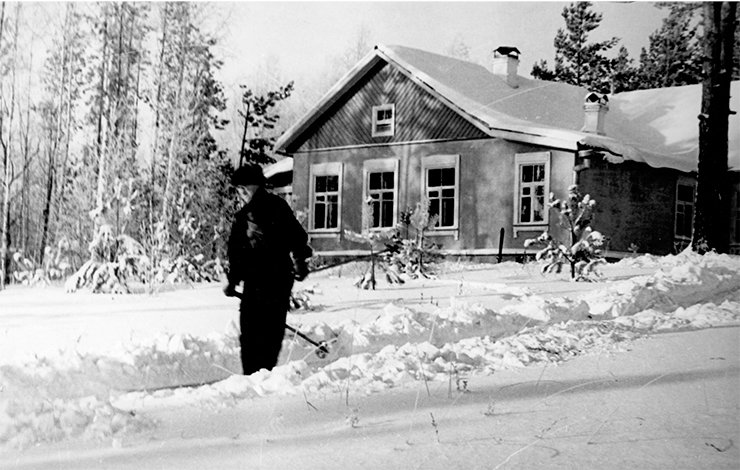
Nothing special about it
But for quite a few trails stamped in the snow
Join here, on the steps
Well-known to everyone.
And all the night through
Somebody paces up and down…
Married and single,
Good or bad,
We all come here often,
And we all love this home.
A visitor, even if uninvited,
Is never unwanted;
The lights are on late into the night
And music sings for hours;
It is always packed
And there’s total freedom in any way –
Some people drink and others eat,
And there’s enough room for everybody,
There’s children’s babble and chatter,
There’s no trace of boring formalities,
And Lavrentiev here is just Granddad.
From “The Doliniad” by N. A. Pritvits,
about the house where
M. A. Lavreniev’s family lived
It was my good luck that in 1957 the government issued a decree on the establishment of the Siberian Branch of the USSR Academy of Sciences. M. A. Lavrentiev invited Academician Pelagueya Yakovlevna Kochina to work in the Institute of Hydrodynamics, which had not been set up yet. She invited my research advisor, the hydrodynamicist Oleg Fedorovich Vasiliev, to join her, and he in his turn took me. It happened, however, after I completed my graduate studies. This is why I came a year later than the first settlers of the Golden Valley (in the summer of 1959), and cannot consider myself an aborigine in every sense of the word. It did not prevent me though from perceiving the atmosphere of that wood nook: it was freedom. Freedom to create and freedom to live – they are interrelated. We lived at will and communicated at will, and this liberty extended to doing science. Today, we can hardly imagine that somebody works not by hours but for the common cause. When there was no Institute of Hydrodynamics yet, we pursued science at home because this was our life.
The atmosphere catalyzed not only scientific research but creative writing as well. I wrote The Doliniad, a poem in the Pushkinian style, which was read at the New Year celebration. This was the year 1960, and we welcomed it in Lavrentiev’s small house. Mikhail Alekseevich (or Granddad, as he was lovingly called among us) and his wife Vera Yevguenievna used to invite us to Sunday lunches. It goes without saying that we celebrated all the holidays together. We were like a big family, we were all Lavrentiev’s children.
Mikhail Alekseevich appreciated The Doliniad so much that he and Vera Yevguenievna presented me with a ten-volume edition of A. S. Pushkin, which they had brought from Moscow for their family library but then decided to give it to me. I still keep it. After the gift, Lavrentiev made me a business offer. At the time, he used to give gazillions of interviews, and the texts were sent back to him for approval. Of course, he did not have time to do it, and I started to proofread for him. At the same time, I continued to do science: worked enthusiastically in the research institute and passed Candidate’s (Ph.D.) defense. One fine day in 1970, Lavrentiev offered me to become his assistant and head of the media relations group (its name changed a few times). At first, I worked alone and then with an assistant, and it lasted over 30 years.
Wolf Ravine – Paris
I worked at Lavrentiev’s side throughout his tenure of the office of Chairman of the Siberian Branch of the Russian Academy of Sciences. He was a person of immense energy and immense valor. Despite his high position, he was outgoing and accessible to everyone. He loved young people and communicated with them a lot. This is how the team was built. No doubt, Mikhail Alekseevich was brilliant at organizing research but what’s more, he was a remarkable man, and I’ll tell a couple of stories about our daily routine to prove it.
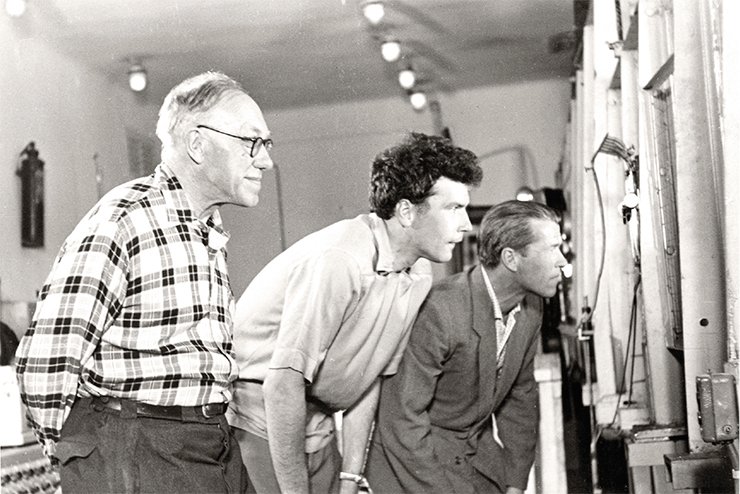
Who were the first to settle here
And about buccaneers
Disdaining kitchen-silk comfort,
About those who forward science,
And also sing that
– What a bummer! –
Novosibirsk is not Colorado…
Not Colorado but who cares?
It doesn’t matter a hoot to us!
If Siberia is not Colorado,
Colorado is worse!
‘‘The Doliniad” by N. A. Pritvits
Since at first the Golden Valley could not boast of many gaieties, Lavrentiev and his wife would invite everybody to their home, especially the single ones, and there were 15—20 of us. How the young could entertain themselves out in the woods? In winter, Mikhail Alekseevich allowed us to attach a tow wire to his car and would give us a ride of Akademgorodok, which was then in process of construction, as far as the Institute of Hydrodynamics.
One day Vera Yevguenievna told her husband: “Why don’t you take the kids somewhere? Shouldn’t they get a life?” And Mikhail Alekseevich took 20 people to Paris!
Going abroad at that time was a great challenge, and for those involved in classified subjects, such as explosions, it was totally unbelievable… However, Lavrentiev organized this as a travel-study trip. The travel costs were up to us, and everybody handled it in his or her own way: I borrowed the money from P. Ya. Kochina, and Mikhail Alekseevich sold his car to pay for the trip of his son Mikhail with his wife and his daughter Vera. And there you go; we all made it to Paris! Today, you can hardly imagine the way it was.
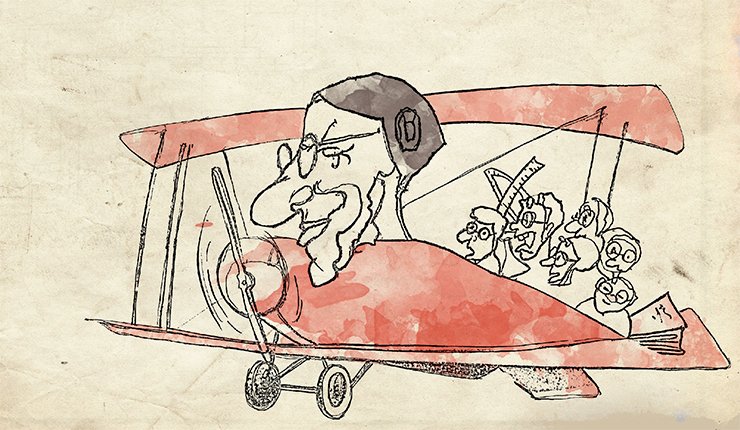
Thanks to Koptyug, the Siberian Branch managed to save face and remain highly important for domestic science. This became possible owing to his efforts to preserve the main thing – scientific brainpower. He succeeded in pursuing strategic plans, flexibly and promptly responding to the constantly changing conditions and preserving the key points of the philosophy of the Branch founders: multidisciplinary nature of scientific research and its high level; focus on promoting scientific results from the idea to their implementation in the region, country or abroad; attracting young scientists; providing the young with a high level of education and conditions for scientific research.
Valentin Afanasievich initiated systematic changes in the Siberian Branch in tough conditions, mapped out and largely implemented the basic provisions of the development strategy for fundamental science, which allowed for a flexible and prompt response to the constantly changing conditions and preserved at the same time the main things put in place by the founders of the Siberian Branch.
Owing to various funding sources, a multitude of shared access centers have been set up including the Synchrotron Radiation Center, Center for Photochemical Research Based on Free-Electron Lasers, Center for Cainozoe Geochronology, Center for New Medical Technologies, etc.
In 1994 the UNO General Secretary Boutros Ghali invited Koptyug (the only one from Russia) to join the Sustainable Development Advisory Council. One of Koptyug’s proposals was to designate areas, in a number of countries, that could become models of sustainable development. He also proposed to make the Baikal region such a territory in Russia. As the result of intensive work carried out in the institutes of the SB RAS together with the UNESCO representatives, in 1996 Lake Baikal was included in the World Environmental Heritage List and as such recognized as not only national but international heritage.
Of all the chairmen of the Siberian Branch I worked for (M. A. Lavrentiev, G. I. Marchuk, V. A. Koptyug, N. L. Dobretsov, and A. L. Aseev) the one most congenial to me was Valentin Afanasievich Koptyug. He was exceptionally tactful, composed and friendly. We were of the same age, I was just ten days older, and it brought us together in many ways.
“What are we, Germans in Siberia?”
When Lavrentiev was arranging our trip to France, he (as I found out later) came across some problems related with my departure. I appeared to have relatives abroad. A while later they found me, and it happened thanks to Akademgorodok, where I made friends with the future documentary film maker Leonia Vuss. After graduation from the All-Union State University of Cinematography, she made a documentary called What are we, Germans in Siberia? which had a photograph of my father. A few years later this film was run in Germany, and it was how my German relatives, the Pritvitses, found me. My father happened to be a baron of ancient lineage. I had not known anything about it.
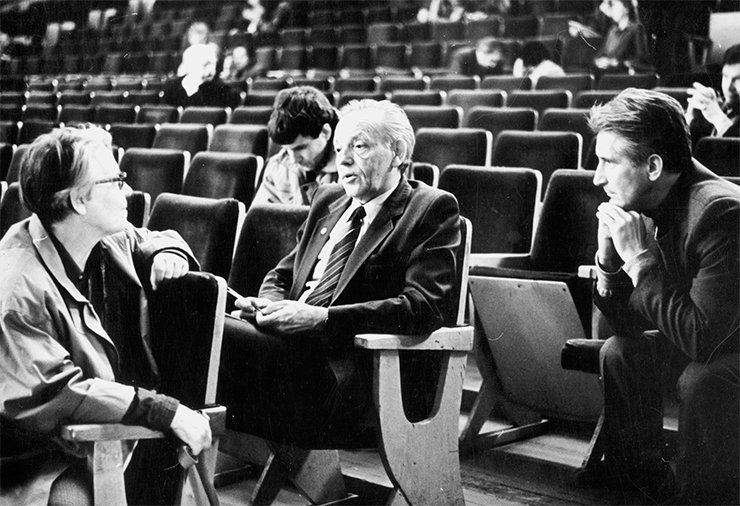
Good little boy,
So he ended up as the chairman
Of all the SBAS sciences.
No matter what topic he takes up,
He sees a system at once,
Is not afraid of any burden,
And works like a dog day and night!
Was elected to the Academy,
But didn’t get on the high horse –
Has remained an endemic
Of romantic days.
He cannot use bad language,
Or escape responsibility,
Or evade a clear answer,
Or take a week’s holiday in summer.
He pursues the general line
For all he is worth.
He’s made up his mind
To reconcile chemistry and ecology
Because he is green himself
Though has common sense
And wants not to go back to the cave
But to create noosphere in the world.
N. A. Pritvits to Valentin
Afanasievich Koptyug, 1990
I was born in Leningrad in 1931. As early as in 1935, after Kirov was killed, they started to remove the people of noble birth from the city (I did not realize it then, of course, as I was four). Our family was deported, and until the beginning of the war (1941) we lived in Ufa. My mother worked as a typist, and my father completed a geodesy course and worked in all sorts of places.
In the first days of the war, the father was drafted to military service. He was marching off to war together with other recruits, and my mother and I were running after him like in the film The Cranes are Flying. In three days, the father came back: geodesists were badly needed behind the lines.
In the same year, 1941, we were ordered to leave the town in ten days at the latest and were told that our failure to do it would be considered a crime. It was winter and it was very cold…we were sitting at the railway station and just did not know where to go. Suddenly, a man we didn’t know approached my father and began asking him questions. He appeared to be the head of a survey party that was in charge of designing a railroad from the Mikhailov alkali-works in Altai to Kulunda Station on the Trans-Siberian Railway.
The father landed a job in the survey party and worked there until 1943. After that, he was often relocated from one construction site to another, and we were always on the move, mostly around the territory of Ukraine, which was being liberated. In eight years, I went to twelve schools. The last three years of my schooling were in Kherson. This was our longest stay in one place. After that I went to university in Moscow and after graduation, to Siberia, this is why I did not know much of my family history. In that situation it was just impossible to find out anything about the family skeletons: there was no time and probably it was not safe for my parents to tell me about the aristocratic ranks and roots. Germans helped.
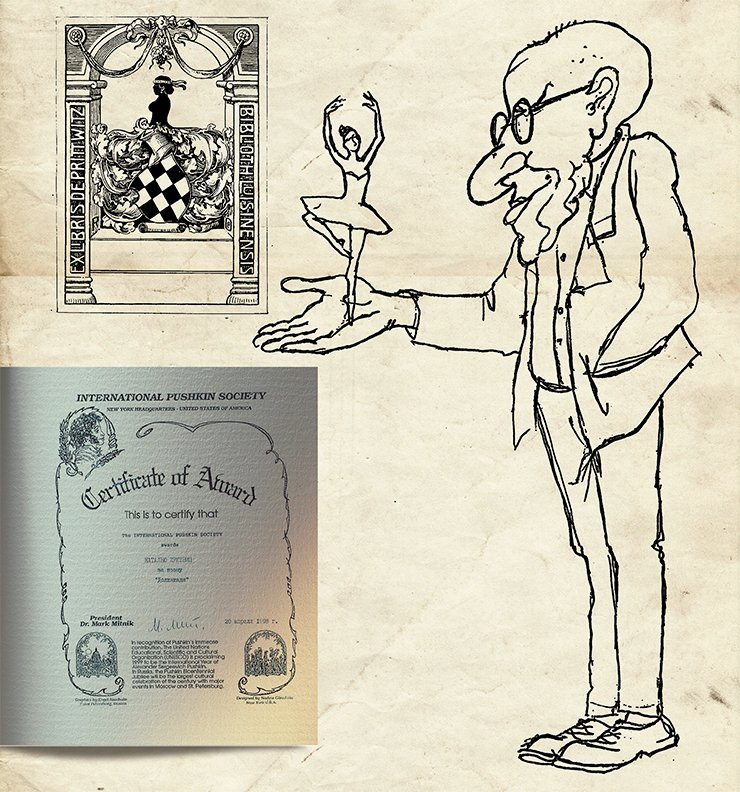
Much later, when I went to Germany in the 1990s, they gave me a book with the Pritvits lineage from the 13th century. My grandfather, grandmother and father were there. Information about the father comes down to his year of birth, and then “married..daughter…got lost in Russia.” During that trip I found out a lot about my relatives. For example, my father’s godfather was Emperor Nicholas II. My grandfather was a colonel in engineering troops; he was in charge of railroad construction and would often accompany the tsar in his journeys around the country – railway trips used to be long at the time. It happened so that the tsar was expecting the heir at the same time as my grandfather was expecting a son.
*The name of the poem is a derivative of dolina (the Russian for “valley”)
References
Dobretsov N. L. Lessons from Koptyug // SCIENCE First Hand. 2012. V. 31. N 1. P. 14—25.
And You Still Cannot Forget... Novosibirsk, 2007. 336 p. [in Russian]
The Era of Koptyug. Novosibirsk: SB RAS Publishers, 2001. 586 p. [in Russian]


